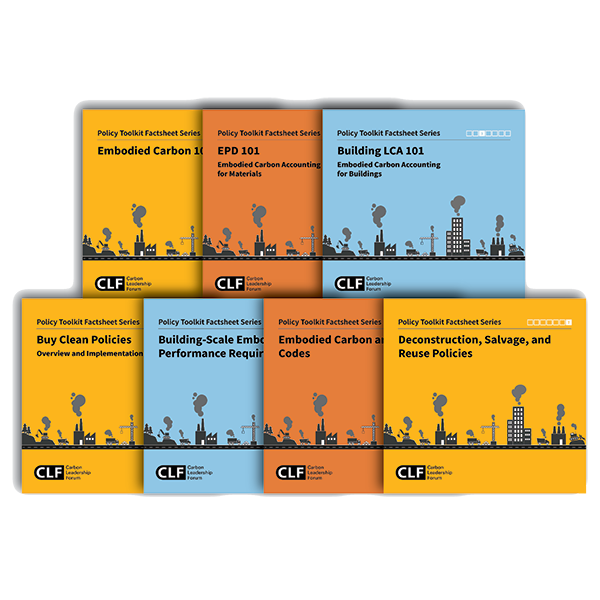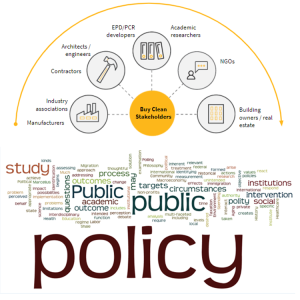
by andrew.himes | May 1, 2024 | All Resources, Authored by CLF, Policy, Policy Toolkit landing page, Resource Library subpage, Toolkits
Policy is an essential step towards creating the scale of action required to rapidly reduce embodied carbon in construction. The Embodied Carbon Policy Toolkit is a collection of resources designed to provide policymakers with tools to understand the current landscape...

by andrew.himes | Mar 9, 2024 | All Resources, Authored by CLF, Case Study, CLF Featured Research, CLF Policy Resources, CLF Publication, Policy, Resource Library subpage
Policies that address embodied carbon are being proposed and adopted at all levels of government- federal, state and local- at a rapidly accelerating pace. This report highlights nine policies in the Northeast region of the United States and Canada as examples of...

by andrew.himes | Sep 8, 2023 | All Resources, Authored by CLF, CLF Featured Research, CLF Policy Resources, CLF Publication, Policy, Publications, Research Report
A Policy-Focused Roadmap for Reducing Embodied Carbon In this report, the CLF lays out a vision and steps towards an ideal LCA ecosystem optimized for use as a tool for policy and private sector decarbonization action (focusing on the United States and Canada). This...

by Andrew Himes | Mar 1, 2023 | All Resources, Feature, Policy
In 2022, an unprecedented number of policies were introduced and passed addressing embodied carbon reductions in the building and infrastructure sector. We have continued to see interest in this topic increase at all levels of government as well as in the design...

by Andrew Himes | Feb 27, 2023 | All Resources, Authored by CLF, Case Study, CLF Featured Research, CLF Policy Resources, CLF Publication, Policy, Resource Library subpage
This document highlights ten case studies of policies driving lower carbon construction across the Pacific Coast. Each case explores the development process, challenges faced, and lessons learned through the policy process. Information was gathered from interviews...

by CLF_NJA_Admin | Jun 15, 2022 | All Resources, Authored by CLF, CLF Featured Publications, CLF Policy Resources, CLF Publication, Policy, Video
Policymakers are taking the lead from building industry practices, tools, and projects to begin implementing a variety of policies to reduce embodied carbon on government-funded and private sector projects. The CLF Regional Hubs are uniquely positioned to act as local...





